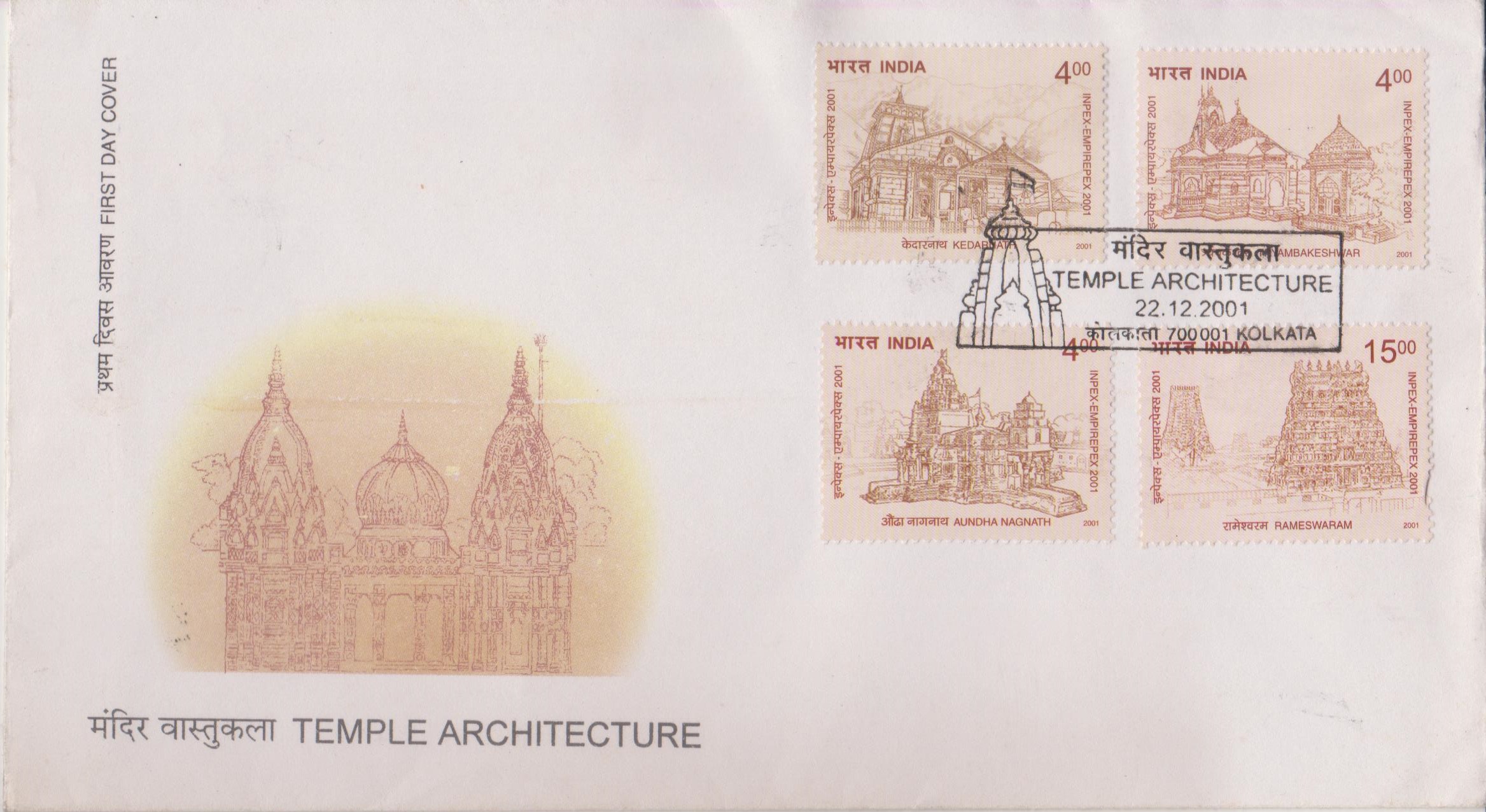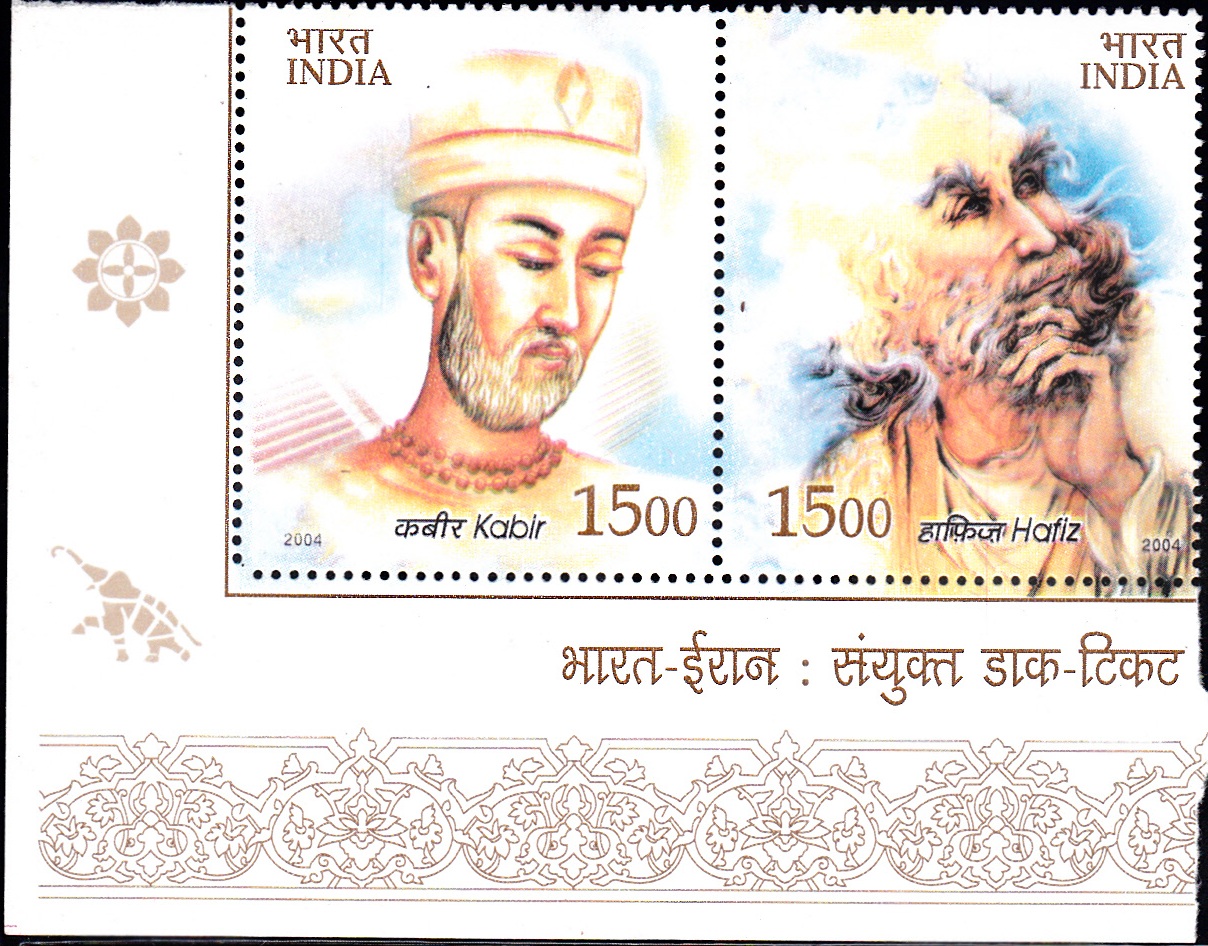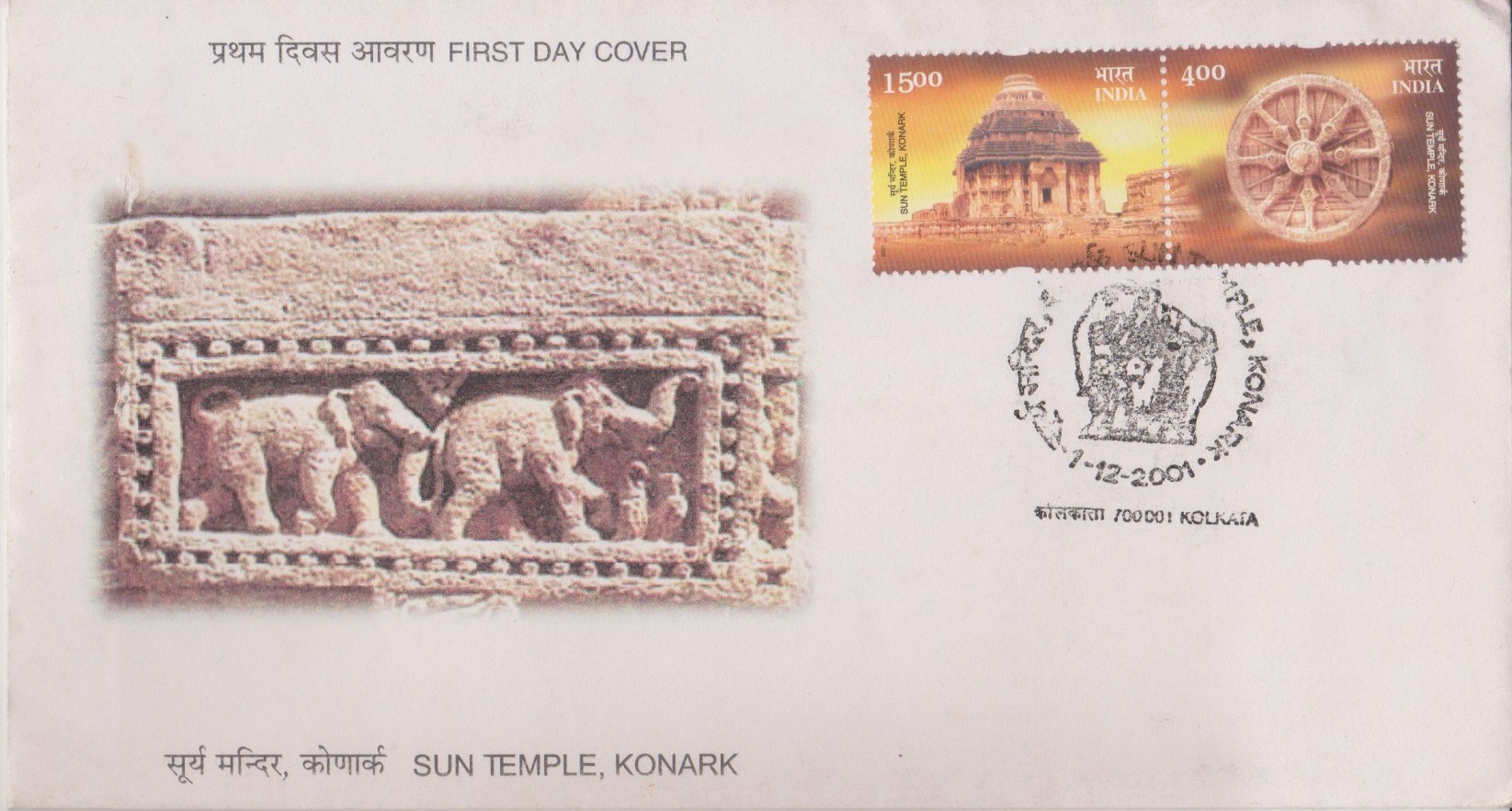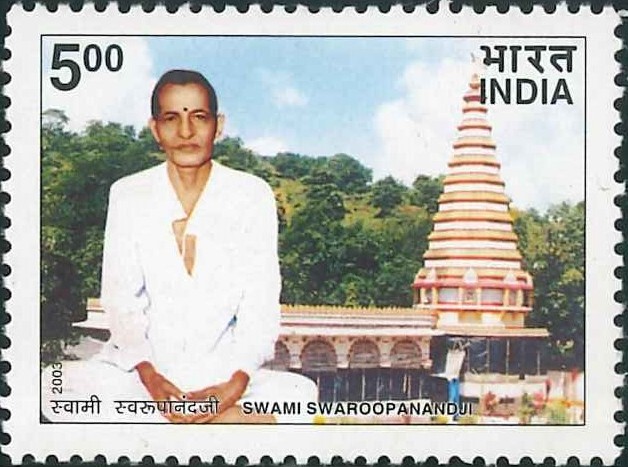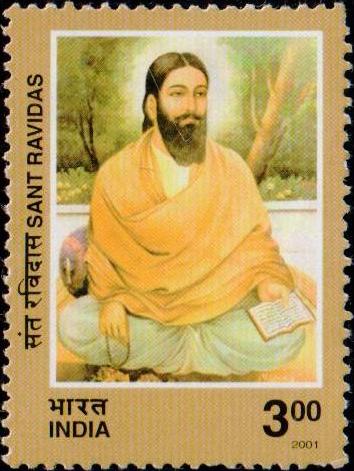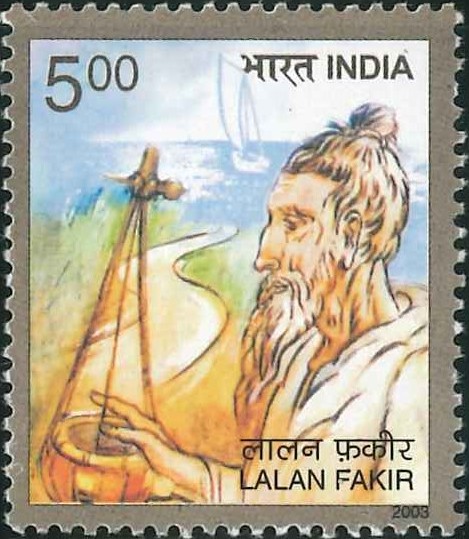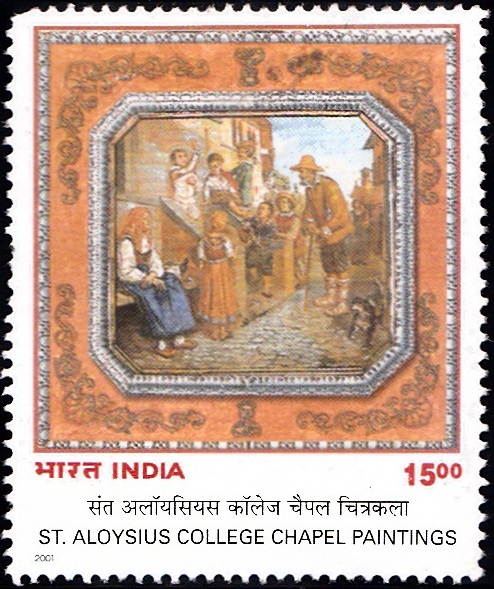
St. Aloysius College Chapel Paintings
A commemorative postage stamp on the Paintings of St. Aloysius College Chapel, Mangalore :

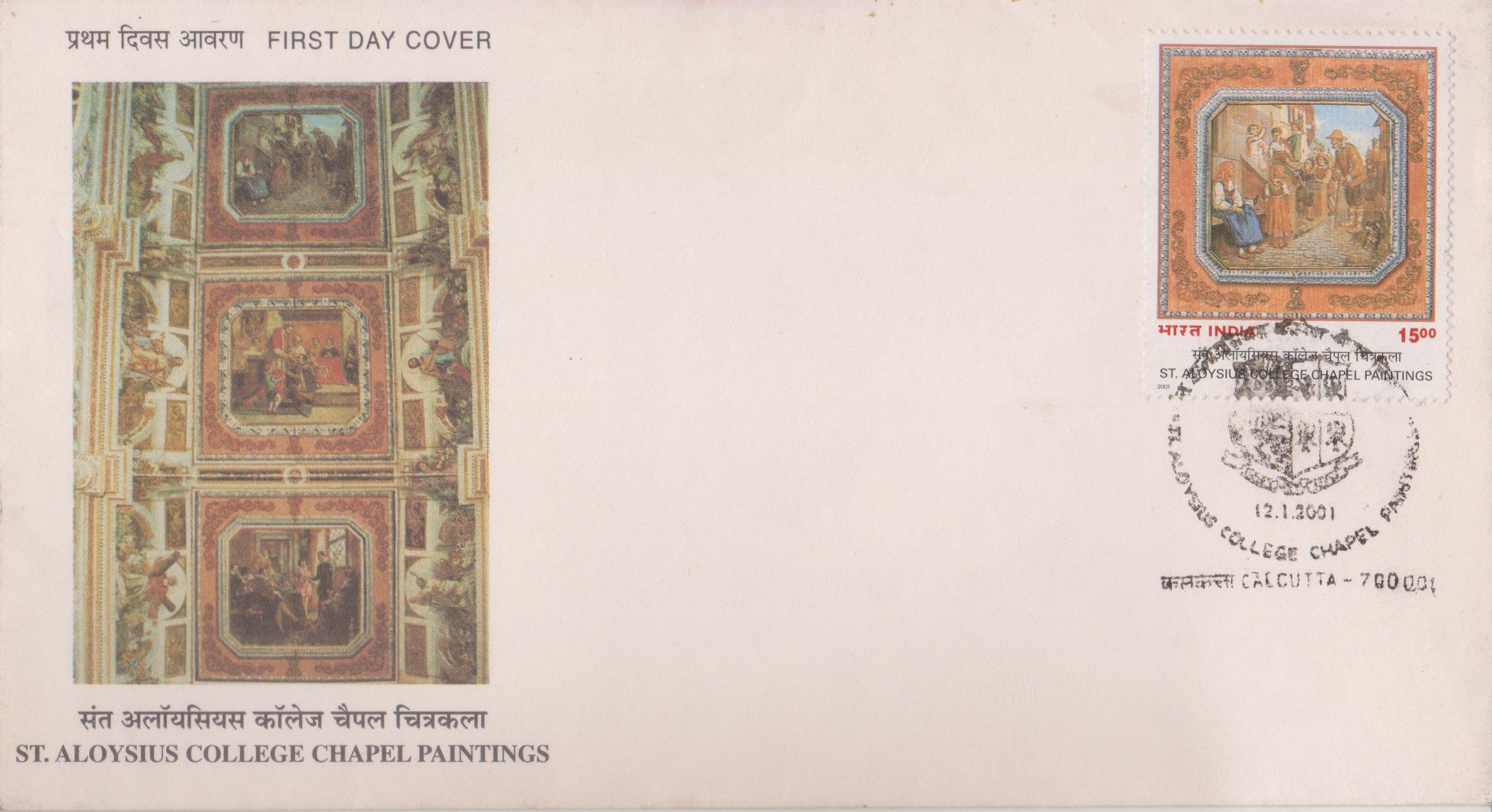 Issued by India
Issued by India
Issued on Jan 12, 2001
Issued for : The Department of Posts is happy to issue a postage stamp on the paintings of St. Aloysius College Chapel, Mangalore.
Design : The stamp depicts one of the panels from the central ceiling of the Chapel, showing the early life of Aloysius Gonzaga. The stamp is being released on 12th January 2001, as it was on this day in 1880 that the St. Aloysius College was inaugurated.
The First Day Cover depicts the paintings of St. Aloysius College Chapel, Mangalore by Antonio Moscheni, include some of the finest fresco and oil paintings (completed in 1901).
Credit :
Stamp Layout and Cancellation : Alka Sharma
FDC : Based on material furnished by St. Aloysius College, Mangalore.
Type : Stamp, Mint Condition
Colour : Five Colour
Denomination : 1500 Paise
Overall size : 4.06 x 4.82 cms.
Printing Size : 3.60 x 4.40 cms.
Perforation : 13.5 x 13.5
Paper : Matt Chromo
Stamps Printed : 1.0 million
Number per issue sheet : 40
Printing Process : Photo Offset
Printer : Calcutta Security Printers Ltd.
About :
- Fine art, over the centuries, has drawn inspiration from devotional and religious experiences. The paintings of St. Aloysius College Chapel, Mangalore are among the finest specimens of paintings in India, and truly constitute a national treasure.
- Executed by Antonio Moscheni, a Jesuit Brother from Italy during 1899-1901, the paintings are of three types: frescoes (paintings on wet plaster), tempera (paintings on dry plaster) and panels painted on canvas and fixed to the ceilings. The masterly use of light and shade by the artist creates a sense of depth, making his images life-like. The rich colours and the delicate touch evoke the mysterious presence of the divine.
- The layout of the paintings follows a threefold division. The central ceiling and the wall behind the main alter of the Chapel depict the life of the noble youth, Aloysius Gonzaga, the Patron of the College, who renounced a dukedom to become a Jesuit and died in the service of the plague stricken in Rome in 1591 at the age of 23. Second comes the two aisles of the chapel, painted with the life of Jesus Christ as described in the Gospels. These are painted on the walls as also on the ceilings together with the texts describing the events. The third set of paintings, on the slope of the roof and the two levels of arches, depict the saints of the Church and of the jesuit order.
- The artist, Br. Moscheni, worked for more than two years on the paintings, which are believed to be designed after the Sistine Chapel in Rome. When the extent of these paintings is considered, one is left with a sense of amazement at the perfection of execution and the speed of painting which the artist must have possessed.
- Late Shri C. Rajagopalachari, one of the greatest exponents of the study of India’s culture and heritage commented thus on the paintings of the St. Aloysius College Chapel : “It is an education and an elevation. As you enter it, your heart is ennobled and you soar to higher things. Even the fanatic would shed every drop of his fanaticism in the face of such humanising glory“. Dr. O.P. Agarwal, Director General of INTACH (Indian National Trust for Art and Cultural Heritage) who supervised the restoration work of the paintings in 1993 remarked : “The paintings are a labour of divine love and some of the finest paintings we now have in India“.
- Text : Based on material furnished by St. Aloysius College, Mangalore.


